To go Back at any time,
use Browser's "Previous Page"
Our longest excursion from Montalcino was to Assisi, which is located in neighboring Umbria. With a goal of exploring the walled town and visiting the Basilica of St. Francis, we drove right past the colossal church of Santa Maria degli Angeli, adding it immediately to our return trip agenda.
The Basilica of St. Francis is composed of two churches, one upon the other: the lower church dating from 1228-1230 and the upper one from 1230-1253. There is, moreover, a crypt dug in 1818 to house the tomb of St. Francis. We approached the basilica from below, and so came first to the lower church entrance:
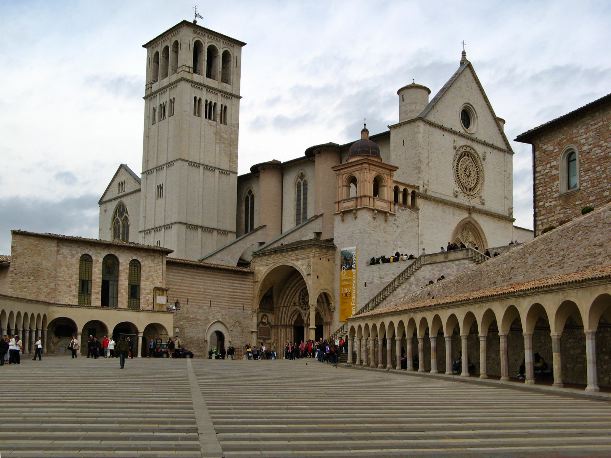
(Despite its appearance, the foreground is not a stairway but a sloped surface with alternating dark and light stonework.)
As we moved through the basilica we noticed many Franciscans in attendance. Their requests for respectful silence were observed fairly well --- considering the large crowds.
To say the lower church is “richly frescoed” hardly does it justice:
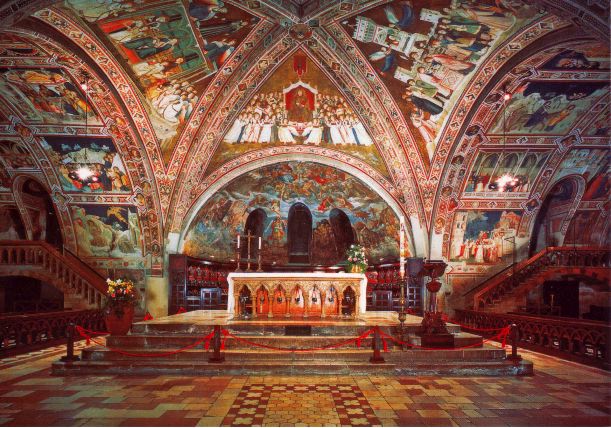
Halfway along the nave of the lower church, stairs lead downward to the crypt. The burial place of St. Francis is an ancient stone coffin with iron ties in an open space above the altar:
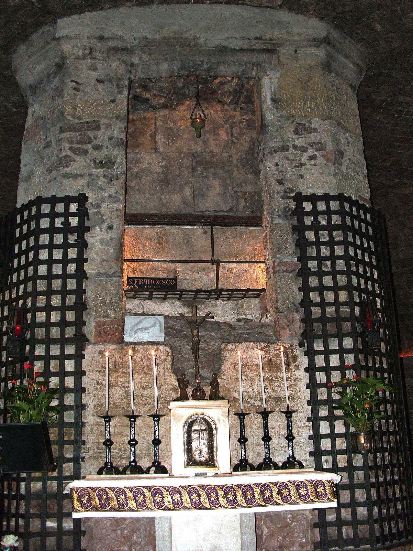
Several of his closest friends and brothers are also buried in the crypt. It is a place palpably touched by holiness.
Exiting the basilica from the upper church, we were greeted with the message, “Pax,” facing us prominently in the lawn:
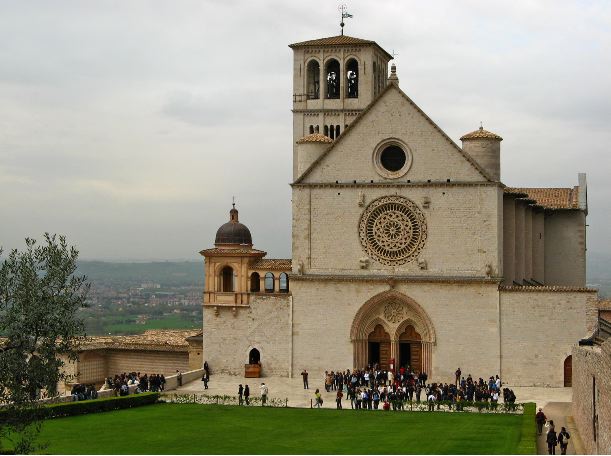
Those with good memories may recall the terrible Assisi earthquakes of 1997 and ask about their long term impact. Those tremors shattered irreplaceable 13th century ceiling frescoes, collapsed whole wall panels and caused structural damage. A simple answer is that there was no obvious sign that we noticed on our own of any earthquake.
A little Internet research explained why. A restoration effort has been ongoing for years. After the earthquake, professionals, students and volunteers recovered the puzzle-like pieces that were mixed in with rubble and painstakingly reassembled the works of art. Though somewhat diminished, frescoes of several of the figures in the ceiling have been put back into recognizable form. Wall panels have been fully restored and new bracing added to the basilica’s structure. Likely, the restoration effort will continue behind-the-scenes for many more years.
Taking our leave of the basilica and its message of peace, we started uphill through town in search of an even more basic need, food:
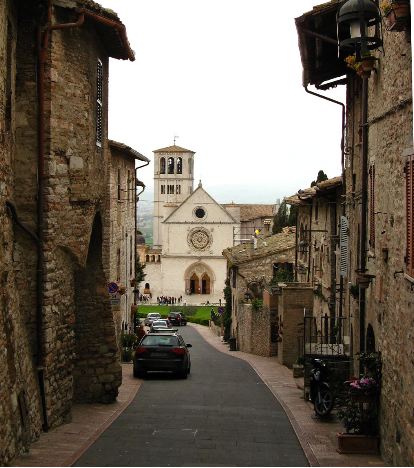
We found our lunch, at last, and much more in the town center, Piazza Commune. The piazza holds an ancient treasure, seemingly a bit out of place, wedged between adjacent buildings, the Temple of Minerva:
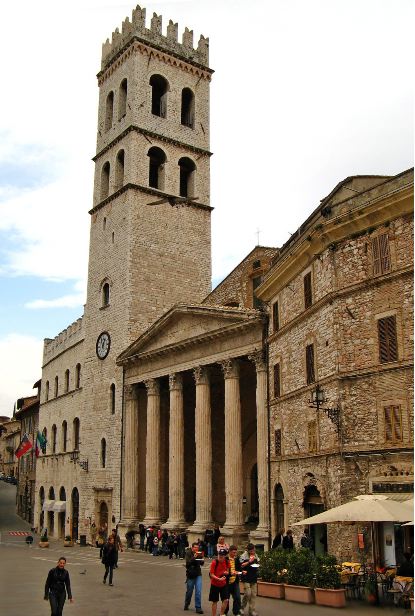
This structure dates from the 1st century BC when it was, in fact, a temple dedicated to Minerva, the goddess of wisdom. Though abandoned by the 5th century, it was never destroyed. The six splendid Corinthian columns and the entire Roman facade are still intact more than 2,000 years after the temple’s construction! Since the 6th century the building has been put to diverse uses --- even as a municipal jail --- but, eventually, it was restored as a church and dedicated to Mary as Santa Maria sopra Minerva (St. Mary over Minerva).
As we took our leave of the walled town, we had a revealing perspective on the Franciscan complex which is comprised of both a basilica and a friary. The friary is connected by way of three buildings to the upper and lower churches of the basilica and accounts for a significant part of the complex:
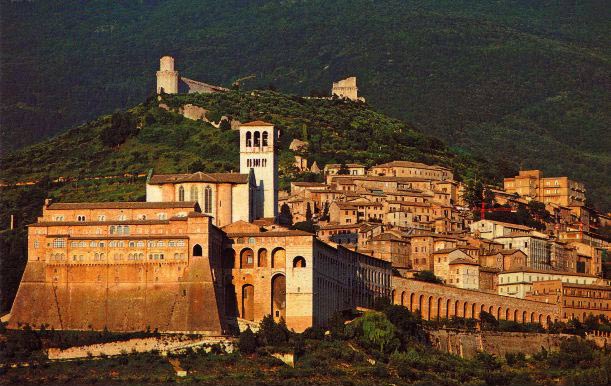
A short distance away is the huge church we had passed earlier, Santa Maria degli Angeli (Saint Mary of the Angels). It is situated in the plains at the foot of the hill of Assisi.
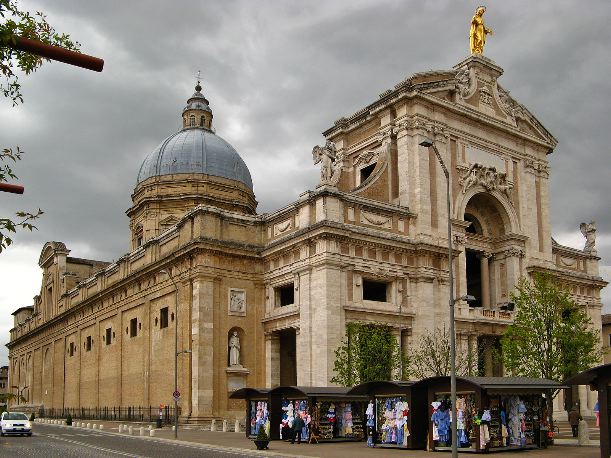
Begun in 1569, the construction of this basilica took over 110 years. Its purpose was to enclose and protect the Porziuncola, a little 9th century church most revered by the Franciscans. The tiny church can be seen and even entered inside the basilica. It has been exquisitely decorated by artists from different periods:
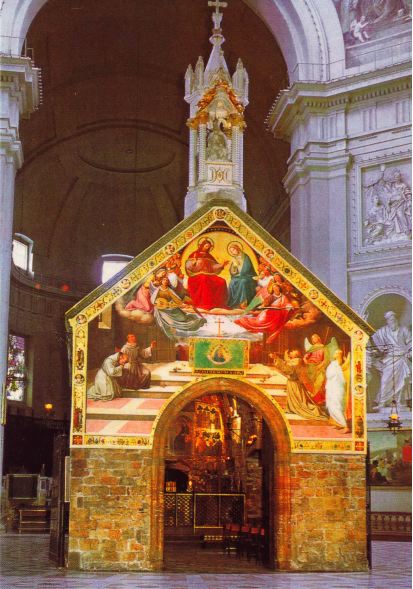
Francis was given the Porziuncola around 1208 by the Benedictines. It was in bad condition, laying abandoned in a wood of oak trees. He restored it with his own hands. The little church became the home of Francis and, soon, that of his first disciples who built huts around it. In this church Francis founded the Order of Friars Minor and from that moment it has never been abandoned by the friars. The small room near the Porziuncola where Francis died in October, 1226, has also been preserved in the basilica.
Fortunately, Francis’ message of love and brotherhood has not been forgotten. We are blessed to have been able to see and touch places where his message and ministry began.